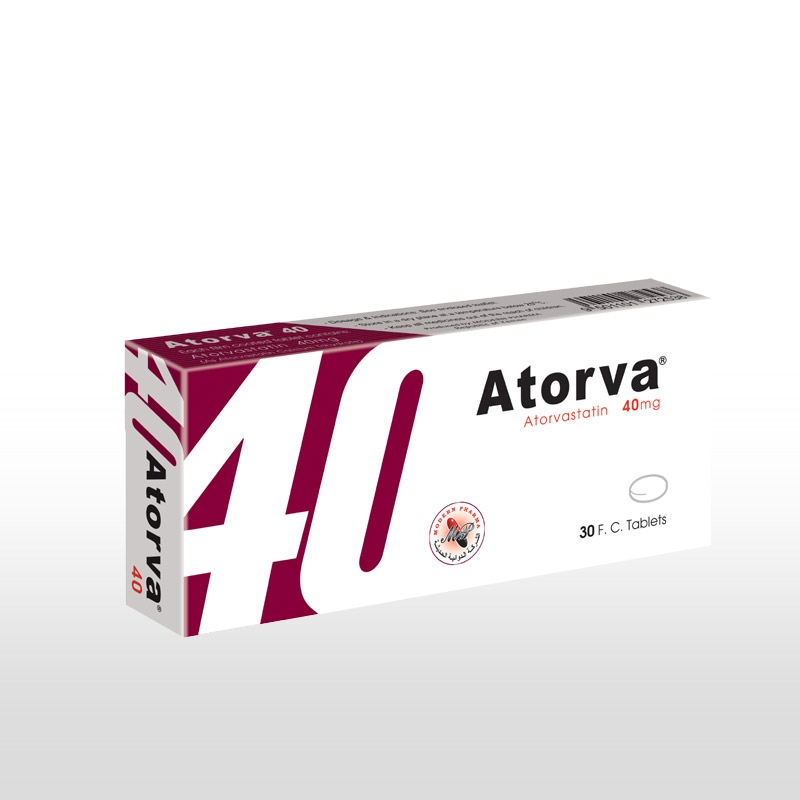ATORVA 40
- Atorvastatin is a selective competitive inhibitor of HMG – COA reductase which is the rate - limiting
enzyme responsible for conversion of (HMG – COA) to Mevalonate, a precursor of sterols including
cholesterol.
- Atorvastatin is rapidly absorbed after oral administration , plasma concentration(Cmax) occured
within1- 2 hours .
- More than 98% of Atorvastatin is bound to plasma proteins.
- Atorvastatin undergoes an extensive metabolism to active ortho and para hydroxylated Metabolites
which 70% of circulatory inhibitory activity of HMG -COA reductase is attributed to active
metabolites .
- Atorvastatin is eliminated primarily in bile following hepatic and / or extra-hepatic metabolism.
Mean plasma elimination half – life of Atorvastatin in humans is approximately 14 hours.The half life
of inhibitory activity for HMG-COA reductase is approximately 20- 30 hours due to the contribution
of active metabolites.


